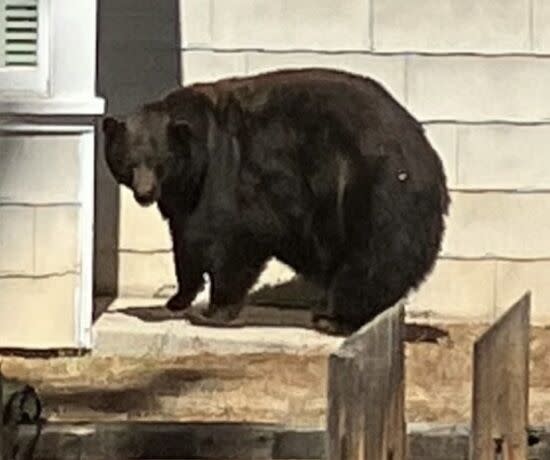Surprisingly deadly summer for Lake Tahoe bears: 20 killed, 18 hurt in vehicle collisions

Twenty bears killed and almost 20 more injured — it's been a uniquely dangerous summer for Lake Tahoe's bear population, with more hit by vehicles from late July to mid-August "than we've ever had at that time," said Ann Bryant of the Bear League.
"There were days when we had four bears in one day that were hit," said Bryant, executive director of the organization dedicated to promoting the safety of bears in the Tahoe region.
As humans continue to encroach on wilderness lands like those near Lake Tahoe, incidents of wildlife being injured or killed by vehicles have increased. It's even "fairly common," Bryant said, for bears to be struck by vehicles in the fall when the animals are in hyperphagia — consuming as much food as possible before hibernation.
"They're out cruising and going back and forth across the roads and heading down to the lake and then back up into the forest," Bryant said. "That's a lot of hours to be out on the road. We kind of expect it then."
But this summer, Bryant and her organization have received reports of an inordinate number of bears being struck by vehicles.
Officials with the California Department of Fish and Wildlife have also noticed the trend.
"We've definitely seen an uptick in vehicle-bear collisions this summer," said Sarinah Simons, human-bear management specialist for the California State Parks' Sierra District.
Pinpointing the total number of collisions is difficult because many incidents go unreported, she said.
Read more: With 106 dead and 1,300 unaccounted for, Maui braces for more heartbreaking news
"Sometimes there's a collision and the animal walks off and is OK, or it might have a little bit of a limp," Simons said. "Bears heal relatively quickly and relatively well."
But Simons noted that "probably more than half" of collisions are fatal.
From mid-July through Monday, Bryant said, at least 20 bears had been fatally struck by vehicles. At least 18 other bears were walking around with injuries.
Their chances of surviving a collision "depend on the bear," Simons said, including how old the animal is.
In some incidents, drivers will see and stop for a mother bear who crosses a road but hit a cub that is trailing her.
"The little cubs of the year and sometimes the yearlings," cubs around 18 months old, "it's harder for them to recover from collisions like that," Simons said.
Bryant recalled a poignant incident earlier this summer when a mother bear was seen carrying the body of a cub that had been fatally hit not far from the west shore of Lake Tahoe.
Read more: Millions of California trees are dying; Joshua trees are just the latest victims
Bear League staffers eventually managed to scare the mother away from the cub long enough for the cub's body to be retrieved.
What's behind the jump in collisions? Increased tourism to Tahoe could be playing a role, Simons said.
"Every year in Tahoe, we get more and more visitation," Simons said, "and more visitation means more traffic and more people on the road."
More people means more food sources near the beaches, where people gather, and in neighborhoods — areas bears need to cross roads to access.
"I think a lot of it is the tourists that just don't know that ... they need to be really aware," Bryant said, and keep their eyes on the road instead of the scenery.
In a release from earlier in the summer regarding vehicle collisions with bears, the Department of Fish and Wildlife urged drivers to maintain vigilance while on the roadways.
"Follow speed limits, watch for signs posted in known wildlife collision areas, and most importantly SLOW DOWN," the department said.
The department also advised drivers that bears are often trailed by their young.
"If you see a bear on the roadway, slow down and scan for other bears or hazards," the department said.
Bryant echoed many of those suggestions but still expressed bewilderment over the large number of recent collisions.
"You know, how can you miss seeing a bear?" she said. "I mean, they're big."
Sign up for Essential California, your daily guide to news, views and life in the Golden State.
This story originally appeared in Los Angeles Times.
